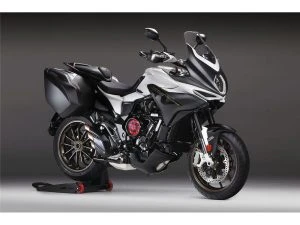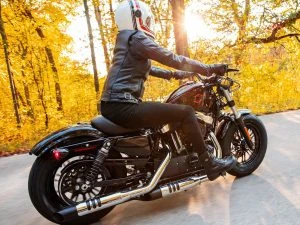Sustainability/Green
Hydrogen V8 ICE

Exciting news for internal combustion engine (ICE) lovers: Toyota, Mazda, Subaru and Kawasaki are wanting to collaborate on the attempt to keep the combustion engine alive while meeting all the global clean air targets. Not only that, but Toyota and long-time Japanese engineering partner Yamaha are at work developing a special new hydrogen-powered 5.0-litre V8 engine. Unlike a hydrogen fuel-cell car, which combines hydrogen and oxygen atoms to create electricity to drive a motor, this new hydrogen V8 internal combustion engine is a conventional piston-driven engine that has been tuned to burn hydrogen instead of petrol.
While this newly developed V8 engine isn’t completely new, the way it’s fuelled is. It’s a 5.0-litre naturally aspirated V8 that is based off the engine that has been used in the Lexus RC F coupe. Yamaha says that it produces around 335 kW of power at 6800 rpm and 540 Nm of torque at 3600 rpm. Having modified the injectors, the head, the intake manifolds and other engine components, this work has added up to make the engine environmentally friendly. The hydrogen-fed ICE has become less powerful than the petrol-fed V8 that the hydrogen engine is based on. In the Lexus RC F coupe, the petrol V8 puts out 472 kW and 536 Nm of torque, so while torque has increased a little, power has dropped considerably. That said, 331 kW is still a stonking amount of power to enjoy, and more often than not it is the torque that you really want in the real world conditions. You also still get the sound of a burbling V8, and what’s not to like about that!
Yamaha engineer, Takeshi Yamada, said that the engine has a different character to a conventional petrol motor. He stated that hydrogen engines provide a friendlier feel, making them easier to use even without having utilize other electronic aids for the drive.
Toyota is clearly committed to the project of providing ICE powerplants that use hydrogen as the fuel. Given that Toyota has run a hydrogen-powered Toyota Corolla in Japan’s Super Taikyu race series as well as showcasing a hydrogen-powered Toyota Yaris GR prototype with the same hydrogen engine technology, it is obvious that they want to continue with this new breed of ICE.
One of the beauties about burning hydrogen instead of petrol is that the hydrogen powerplant does not produce carbon dioxide, which is considered to be one of the primary contributors to global warming. There would also be no significant nitrogen oxides emissions from an ICE designed to burn hydrogen, thanks to the selective catalytic reduction technology used in the aftertreatment of the combustion gases.
“Hydrogen engines house the potential to be carbon-neutral while keeping our passion for the internal combustion engine alive at the same time,” Yamaha Motor president Yoshihiro Hidaka said. He also added that: “I started to see that engines using only hydrogen for fuel actually had very fun, easy-to-use performance characteristics”.
While hydrogen is plentiful in the universe, it must be separated from other compounds to be used as fuel. Up to the year 2020, most hydrogen was produced from fossil fuels, resulting in CO2 emissions. Hydrogen obtained from fossil fuels is often referred to as grey hydrogen, when emissions are released into the atmosphere. Blue hydrogen is the hydrogen produced from fossil fuels when emissions are captured through carbon capture and storage (CCS).
Hydrogen that is produced from fossil fuels using the newer non-polluting technology called methane pyrolysis is often called turquoise hydrogen.
You can also generate hydrogen from renewable energy sources, and this hydrogen is often referred to as green hydrogen. There are two practical ways of producing green hydrogen. One of the ways is to use electric power for producing hydrogen from the electrolysis of water. The other way of producing green hydrogen is to use landfill gas to produce the green hydrogen in a steam reformer. Hydrogen fuel, when it is produced by using renewable sources of energy like wind or solar power, is a renewable fuel.
Hydrogen can also be created from another renewable energy source called nuclear energy via electrolysis, and this is sometimes seen as a subset of green hydrogen, but it can also be referred to as being pink hydrogen.
Obviously, when a car can be designed to run on hydrogen that has been produced from renewable energy sources, then this is a good thing. Toyota and Yamaha remain adamant that this is great technology which could carve out a niche for itself in the new EV automotive landscape.
Toyota has also recently revealed a fleet of 12 zero tailpipe-emission concept vehicles, many of which will reach production in the coming years.
This is all good news stuff, especially for those of us who love the sound of an ICE instead of a silent EV. The noisy farts always get the best round of laughter!
Motorcycles

There are those of us who just don’t do motorcycles. The thought of hurtling along the motorway with a massive engine between your legs sounds downright alarming to many people, and I get that. Considering that a motorcyclist does have less protection than most road users does put a lot of people off riding a motorcycle. However, a careful and skilful rider can manage the risks and keep well out of harm’s way.
Maybe you already ride a motorbike. You might even be wondering about getting your motorcycle license. If you haven’t experienced riding a motorcycle, then the chances are you’ll enjoy the thrill of riding a motorbike safely. Safely being the important word. Once you’ve mastered the skill of riding a motorbike safely, travelling about Australia on two wheels instead of four can be a fun and exciting experience you’ll enjoy for years to come. Out in the open, taking in the sights and smells, experiencing the elements, being one with the machine as you lean through the corners and feel the response are all reasons why many people love riding motorcycles.
As a tool to combat rising fuel prices, the motorbike could be a useful option. Whether you’re single or married, the motorbike can combine with your other means of transportation to get you where you need to go. They use a lot less fuel than a car and have the size (or lack of size) that enables them to slip through congested areas and park in tight spaces. If emissions are an issue for you, then the motorbike generates less of an environmental impact than a car does.
Even with the recent global health concerns and restrictions on our daily lives, over the last couple of years the motorcycle has enjoyed an increase in sales throughout Australia. Over the 2020 period, new motorcycle and scooter sales in Australia were up 6.2% from the previous year, showing a strong demand for individual mobility transport options, of which the motorcycle is the best. And throughout 2021, the growth trend mushroomed with an increase of 16.6%. That equated to a total of 102 new units sold, the highest level for 15 years.
Honda, Yamaha, and Kawasaki claim the biggest chunks of the market share, while Suzuki, KTM, BMW, and Harley Davidson deliver strong motorbike sales. All motorcycle manufacturers have enjoyed the stronger consumer demand for motorbikes, resulting in better sales figures.
Many people find motorcycle riding a relatively easy task but riding out on the road still comes with a fair share of risk. Lack of experience and recklessness are often key areas associated with motorcycle accidents. Damp and slippery roads need to be recognized and ridden over with care.
Allowing plenty of space between you and other road users is a must, and as you ride be aware of other people’s actions, intersection dynamics, any oncoming cars, and any car (whether moving or stationary) in front of you as you ride. If you are reading the other road users well, reading the road conditions right, and keeping your distance, then motorcycling is relatively safe.
There are plenty of nice sport bikes out there like the Buell Hammerhead, Ducati V4 or the Yamaha YZF-R7. These are great bikes for a fast ride over a short distance. They can make useful commute bikes as well.

Buell Sportbike
The touring bikes and dual purpose-bikes are better set up for a comfortable seat and long distance ergonomics. These are swift bikes and can handle two-up and luggage no problems. They also make a decent commuter. Bikes like the Triumph Tiger 1200, MV Augusta Turismo, KTM 1290, Kawasaki Versys, Honda CB500X and BMW 1600 GT are great options in this class of bike. They are a heavy bike, so not ideal for learners and the inexperienced.

MV Augusta Turismo
Scooters and smaller bikes like the Honda Navi, BMW CE O4 Electric Scooter, and Honda CB300 are handy inner-city commuters and great or a learner rider.

BMW Electric Scooter
A Roadster like the Harley Davidson Street Glide ST, Harley Davidson Forty-Eight, Indian Chief, and Triumph Bonneville Bobber are all about the wow factor and looks. These are sexy bikes, but some people also find their relatively relaxed riding position, which includes arms and legs pointing forwards, nice for cruising on longer rides.

Harley Davidson Forty-Eight
An FCEV for Our Environment

With the rising concerns over greenhouse gas emissions, the development of ammonia fuelled vehicles as environmentally friendly cars would have to look rather promising. A car running on NH3 – now what’s not to like about that?
Many scientists believe that it is urgent to reduce CO2 emissions because of the global warming effect that the gas has on the climate around the globe. Despite CO2 in the atmosphere being great for plant growth (some of the edges of the earth’s deserts are greening up again with increased CO2 in the atmosphere), and the earth’s water cycle playing a pivotal role in governing the earth’s temperature, the drive to create taxing emission standards and expensive alternatives continues to drive government policy worldwide. What if we gradually changed over to another source of energy so that everyone in the world could afford the switch, allowing people to maintain a higher standard of living?
Using CO2–free fuels to reduce the level of CO2 emissions could be a viable option in the current climate. So, what about ammonia?
An internal combustion engine (ICE) burns a fuel. Basically, you can convert an engine to run on any fuel such as fossil-fuels, hydrogen and ammonia, and there are many ways to do so. ICE engines are very good in combination with battery and hybrid systems. It would be a perfect solution to make a hydrogen-fuelled vehicle with hydrogen that has been cracked out of ammonia and stored in the vehicle. The ammonia would then be used to drive the electric propulsion system because an electric propulsion system is highly efficient. That would be a perfect vehicle.
The battery system in this model would not need to be anywhere near the size of a pure EV and anywhere near the weight. For instance, in a Tesla, the whole EV platform under the car is a battery pack that is massively heavy. A clean-burning ICE producing heat-waste from the combustion process could use this heat-waste to warm up the cabin’s interior on a cold day, cool the cabin down via a heat exchanger, and could also be used to cool and heat the battery accordingly for optimum battery operating temperatures.
You can store accessible hydrogen in the form of ammonia (NH3). Unlike hydrogen gas, which requires very low (cryogenic) temperatures to liquefy, ammonia becomes a liquid at –34°C. Ammonia also does so at room temperature and at 9 atmospheric pressures, making it much more convenient to use as a transportation fuel. Ammonia is comparatively inexpensive to produce, and the hydrogen can be separated out using catalysts without undue losses.
Essentially, you have a car with a combustion engine that is burning the hydrogen that is cracked out of the stored ammonia onboard the car to produce electricity. The engine would have an alternator as an electric motor that would power the drivetrain with electricity at close to 99% efficiency. This set-up is known as a Fuel Cell Electric Vehicle (FCEV).
The FCEV above uses stored ammonia that’s cracked onboard the car to produce hydrogen to run the electric drive train – only emitting water vapour and warm air as exhaust, and is considered a zero-emission vehicle. Now that sounds pretty smart, efficient and green to me!
Australia’s Most-Loved Utes Will be Going Hybrid
Earlier this year, Toyota set the benchmark when it announced that its much-loved dual-cab ute, the HiLux would be produced in hybrid format by the end of this decade. Although a long way off, it certainly set the scene for plenty to get excited about, with electrification here and here in a big way, and only set to gain more traction as time goes on.
We’re actually somewhat optimistic that Toyota will be able to fast-track the development of a hybrid HiLux given the tailwinds in effect pushing manufacturers to accelerate the transition to more environmentally-friendly cars. So while Toyota has flagged until the end of the decade for a hybrid HiLux, that may well be the case for the company’s entire model range, rather than it’s best-seller.
Toyota has been on record as saying it believes hybrids will be one of the dominant forms of vehicle over the short-term, while also representing a major chunk of the new car market down the track.

Ford joins the party with the Ranger
Australia’s other favourite ute, the Ford Ranger, is also set for an electrified future.
The blue oval brand has confirmed it will develop a hybrid Ranger, alongside a hybrid Everest four-wheel drive, with the jointly-developed pair set to be engineered locally in Australia and assembled out of Thailand.
Pleasingly, Ford is on a fast track to production, aiming to have the duo rolled out overseas by 2024, targeting countries where emissions targets are driving the push to green vehicles. Although that date does not extend to Australia at this stage, there is likely to be pressure over the coming years, particularly on a political front, that will hasten the need for more hybrid and electrified vehicles down under.
This development could very well play into the cards of a hybrid Ranger arriving much sooner than the timeline provided by Toyota. If that looks likely, watch out, because Toyota may well throw down the gauntlet to compete with its arch-nemesis on the hybrid battlefield.
It is looking increasingly as though a hybrid Ranger will be offered in petrol-electric format, with countries across Europe and North America now seemingly putting the brakes on diesel emissions.
What’s even more interesting, however, is that the 2022 version of the Ranger has been ‘future’proofed’ to accommodate hybrid power down the track, raising eyebrows about an even earlier arrival. Ford has achieved this thanks to a redesign of the Ranger’s chassis, optimising space under the hood.
What does it all mean? The timelines might be quite distant, but we think there could very well be a surprise to the upside in terms of the hybrid development of Australia’s two best-selling cars.